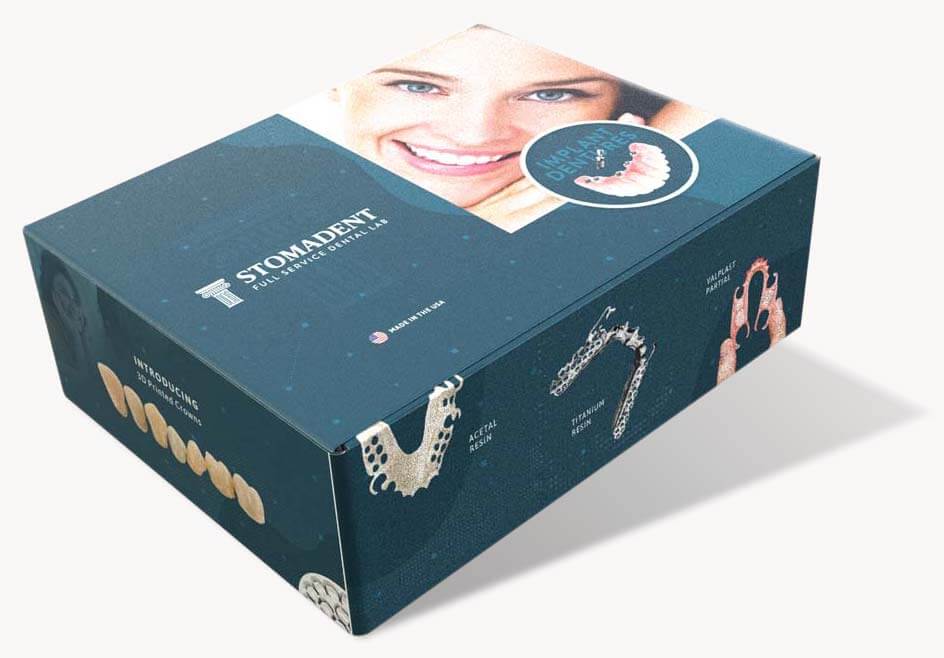Hybrid Cast/Flexible Partial Dentures:
All About Flexible Partial Dentures and Their Alternatives
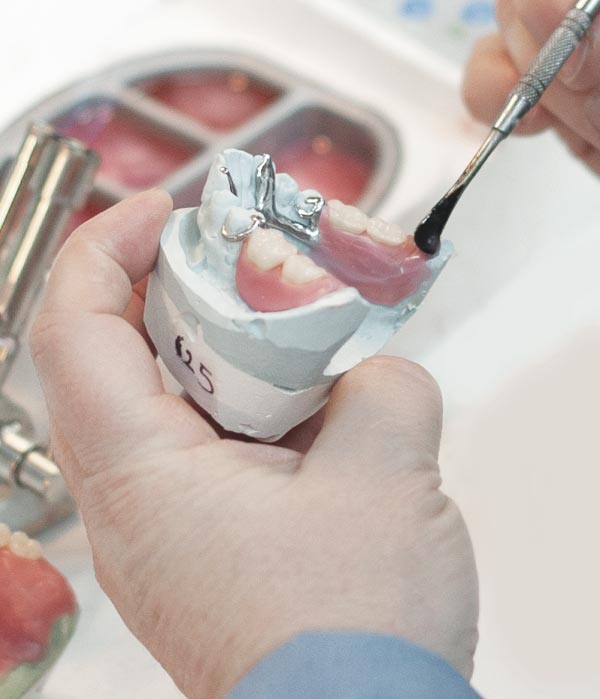

By David Hudnall, DMD
Metal partial dentures aren’t suitable for every patient. Flexible and semi-flexible partial options like Valplast, Acetal Resin, and variations using Wironium or Titanium provide more choices for dentists and patients alike.
Flexible Partial Dentures vs. Metal Partial Dentures
Cast metal partial dentures have been the standard of care for removable tooth replacement for many years. From the dentist’s perspective, metal partials are functional and serve to fill the space left by the patient’s missing teeth. But if you ask patients who wear them, some will say they really don’t like having metal inside their mouth.
What are the alternatives?
Metal Partial Dentures Disadvantages
What’s wrong with metal partial dentures?
- They are functional but don’t always look good
- Patients often dislike unsightly metal showing when they smile or talk
- Going to the bathroom after a meal to remove debris
- Denture teeth on metal partials do not always blend seamlessly with the patient’s natural teeth
The list goes on.
Flexible partial dentures offer a different approach to tooth replacement and may prove to be the best overall choice in many cases. Advances in flexible and semi-flexible resins have allowed partials to be reimagined and designed for superior strength and outstanding appearance. In today’s appearance-conscious society, they just may be the solution that your removable appliance patient is searching for.
What is a Flexible Partial Denture?
Flexible partial dentures are made from a lightweight, thermoplastic material that is CAD/CAM designed for optimal fit and superb tissue adaptation.
Compared with metal partials, flexible partials provide greater comfort and offer improved esthetics without metal clasps – or any metal at all. Their strength is obtained from precise tissue coverage. In many cases, it is difficult to tell where the partial ends and the natural teeth begin. The materials utilized in flexible partial dentures are hypo-allergenic and suitable for patients with allergies to denture monomers or nickel.
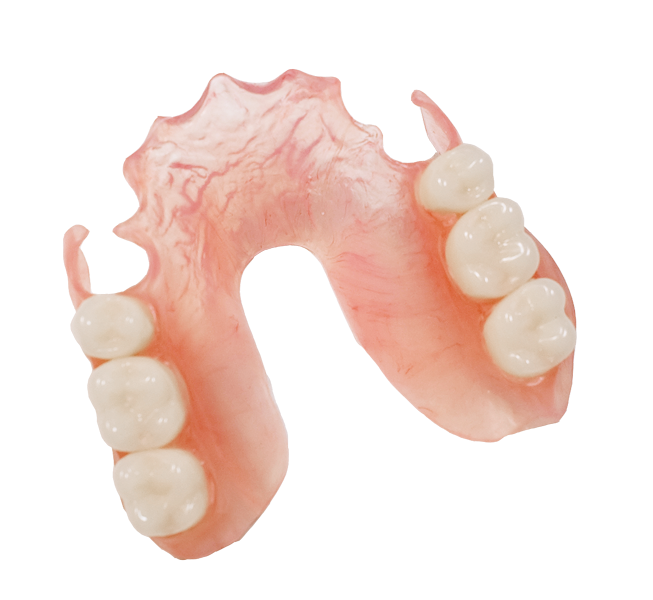
Flexible denture disadvantages
As with any dental appliance, there are a few disadvantages for flexible dentures.
Flexible partials are just that – flexible. And that can be both good and bad.
| Advantages | Disadvantages |
|---|---|
| Kind to tissue | Baseplate material flexes when chewing, reducing chewing efficiency |
| Good for aesthetics and comfort | Not suitable when used to replace a long span of missing teeth or for a distal extension design |
| Improved appearance | In certain cases, retention is compromised compared with a cast-metal partial denture |
Not all flexible partials are created equally.
There are different types of flexible partial denture materials. Each has its own unique and distinctive properties, applications, advantages, and disadvantages. What esthetic options do we have should a flexible partial not be the best choice for a particular patient?
Best Flexible and Semi-Flexible Partial Dentures Alternatives
Valplast Partials
Valplast is a flexible partial denture material manufactured from a combination of biocompatible nylon and thermoplastic resin.
When to Use Valplast Partial Dentures
This flexible partial is a great choice as a Nesbit partial for replacing one or two missing teeth, for patients who have teeth present on both sides of edentulous areas, and for patients whose teeth are less stable due to periodontal disease or recession.
Since Valplast clasps don’t really touch the tooth – they hug the gums, they are kind and gentle to the natural dentition. Because there are no tooth-supported occlusal rests, they rely on excellent adaptation to the underlying tissue for precise fit. Valplast is available in several tissue color choices, designed to blend with most shades of natural tissue. The clasps are adapted close to the gingiva and are also made from the same tissue-colored or clear material, depending upon the location.
Combining Valplast Partials with Wironium or Titanium Frameworks for a Flexible Partial Alternative
When we combine Valplast material with a Wironium nickel-free metal framework or a Titanium framework, we gain additional support, stability, and retention. It is also possible to design a long span with less movement than with Valplast alone. Metal rests and semi-flexible malleable bracing arms provide additional support to the tissue-borne Valplast material and may be placed in areas that do not intrude on the esthetic zone.
Consider a case with the following configuration: The patient has a crown on #3, #6-11 is a bridge, and #15 is an implant-supported crown. The patient is also concerned that the anterior bridge is aging and they don’t want to replace it anytime soon. With this configuration, it is possible to use metal clasping and rests for extra stability and support in the posterior. This allows Valplast clasps in the anterior to “baby” the tooth-supported bridge that may have some minor periodontal involvement.
With any case there are trade-offs. You, the clinician, must understand your patient’s goals and help them to decide what the best overall solution for them may be.
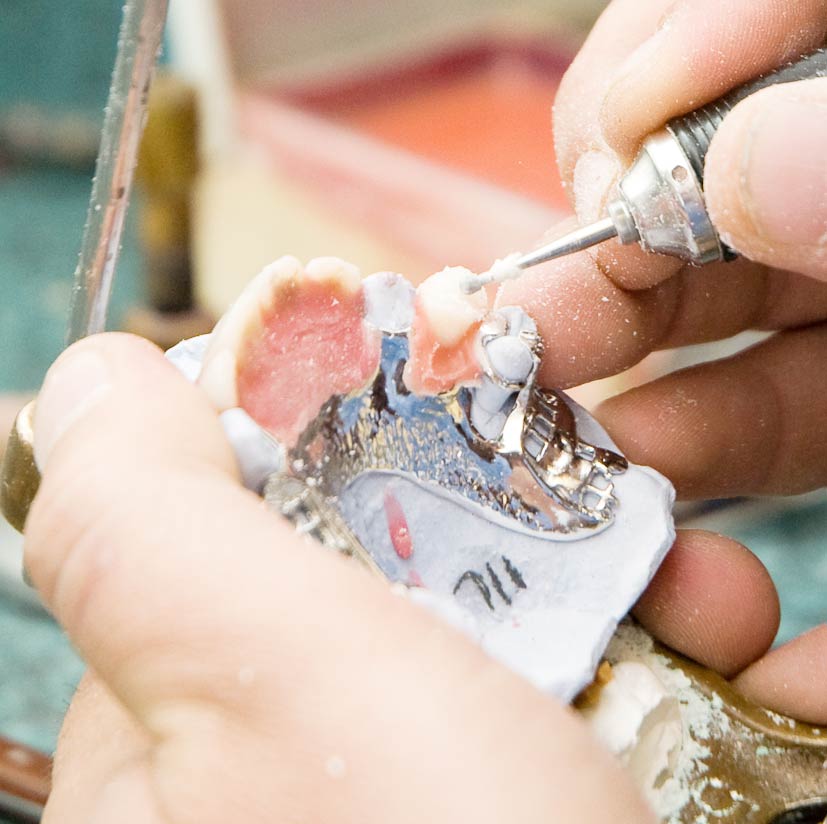
Acetal Resin Framework Partial Dentures
A semi-flexible removable tooth replacement option and partial denture without metal clasps, Acetal Resin Partial Dentures are made from pre-cured monomer-free polyacetal resin. Using CAD/CAM technology, a tooth-colored polyacetyl disk is precisely milled into a framework with tooth-colored clasps that sit lower on the natural tooth than traditional metal clasps, allowing the clasps to be nearly invisible. Denture teeth are milled separately and are joined to the framework by the lab technician to seamlessly fit the edentulous spaces.
When to use Acetal Resin partials
Like Valplast, Acetal Resin Partials are a great option for replacing teeth, especially in the esthetic zone, when the missing teeth are surrounded by natural teeth or crowns that can support the partial.
The Acetal Resin flexible material is available in many shades that correspond with the Vita shade guide. This makes it possible to gain additional retention and stability in the form of tooth-colored clasps and rests without compromising esthetics. Elastic memory allows the clasps to drop into deep undercuts for security, similar to that of a metal clasp but without the unsightly appearance. Tooth-colored rests also prevent the partial from over-seating when flexing and chewing.
When NOT to use Acetal Resin partials
Acetal Resin is not be the best option for bruxism patients. A heavy bruxer can wear the framework and rests, affecting the fit of the partial denture by allowing the semi-flexible framework to over-seat with time.
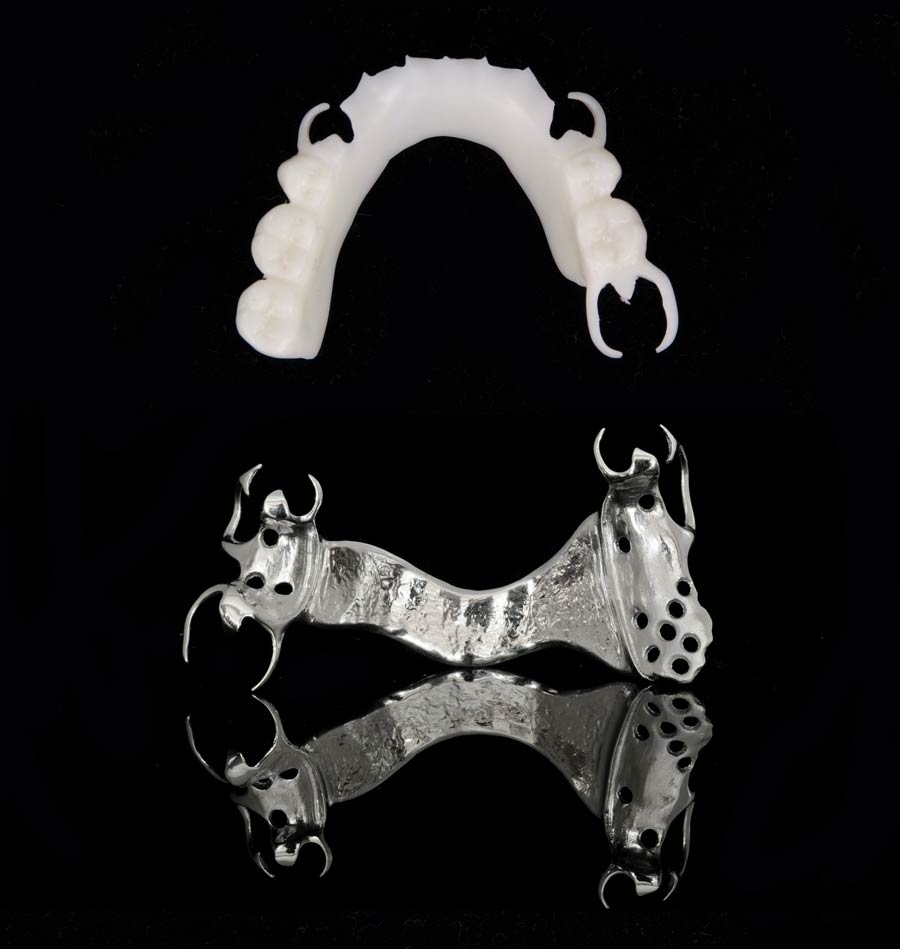
Consider the following case: The patient has an existing crown on tooth #19 and natural teeth #22-27 remaining. He would like to replace his missing teeth with the most aesthetic removable restorative option possible. The acetal resin framework design includes having occlusal rests and clasps on #19, a lingual plate on #22-27 for additional framework stability, and teeth #22 and #27 receive facial clasps. Since the entire framework is made from acetal resin, this partial denture with no metal clasps leaves no unsightly metal visible in the mouth.
Revolutionary Tooth Replacement Options Utilizing the Most Advanced Technology
When it comes to creating the most esthetic, best fitting partial denture possible, Stomadent Dental Lab is in a class all its own. Located near Boise, Idaho, we serve practices in Idaho, Montana, Washington, Oregon, Wyoming, and doctors all over the US and Canada. Whether you choose Wironium or Titanium metal partials or Valplast or Acetal Resin flexible partials, our denture technicians have the training, expertise, and experience with the latest CAD/CAM technology that allows partial denture design to become a functional, precise-fitting reality.

